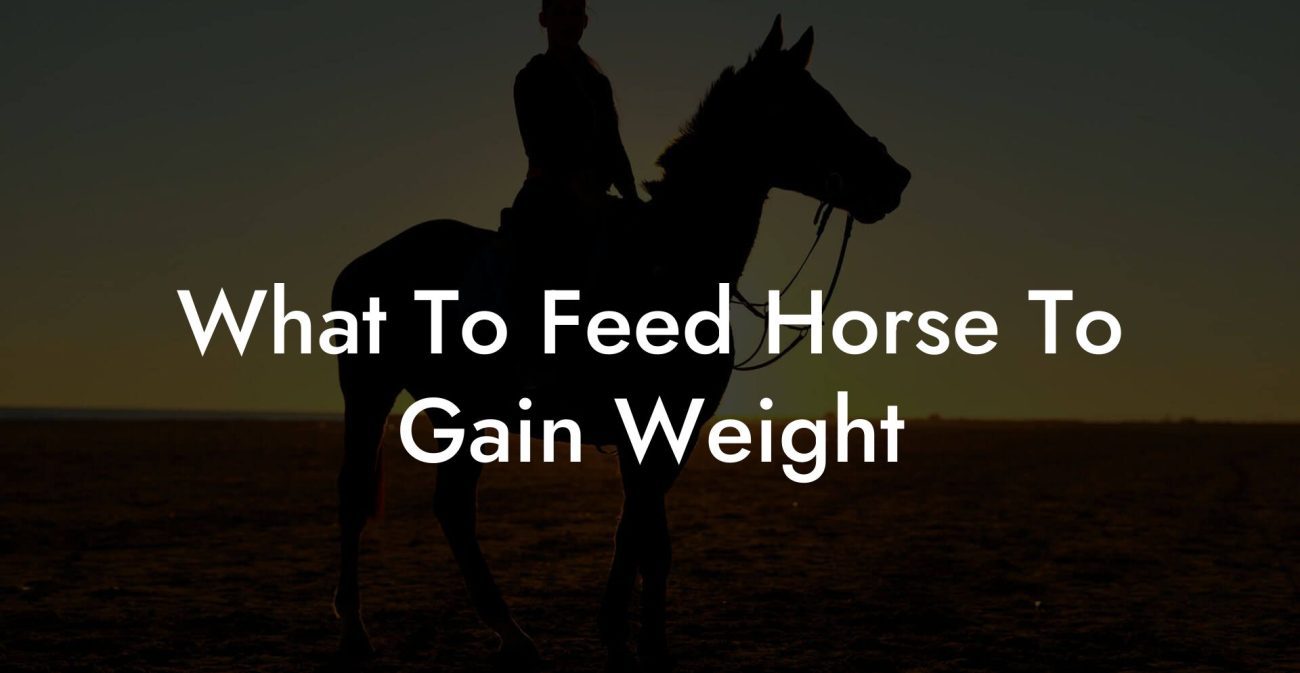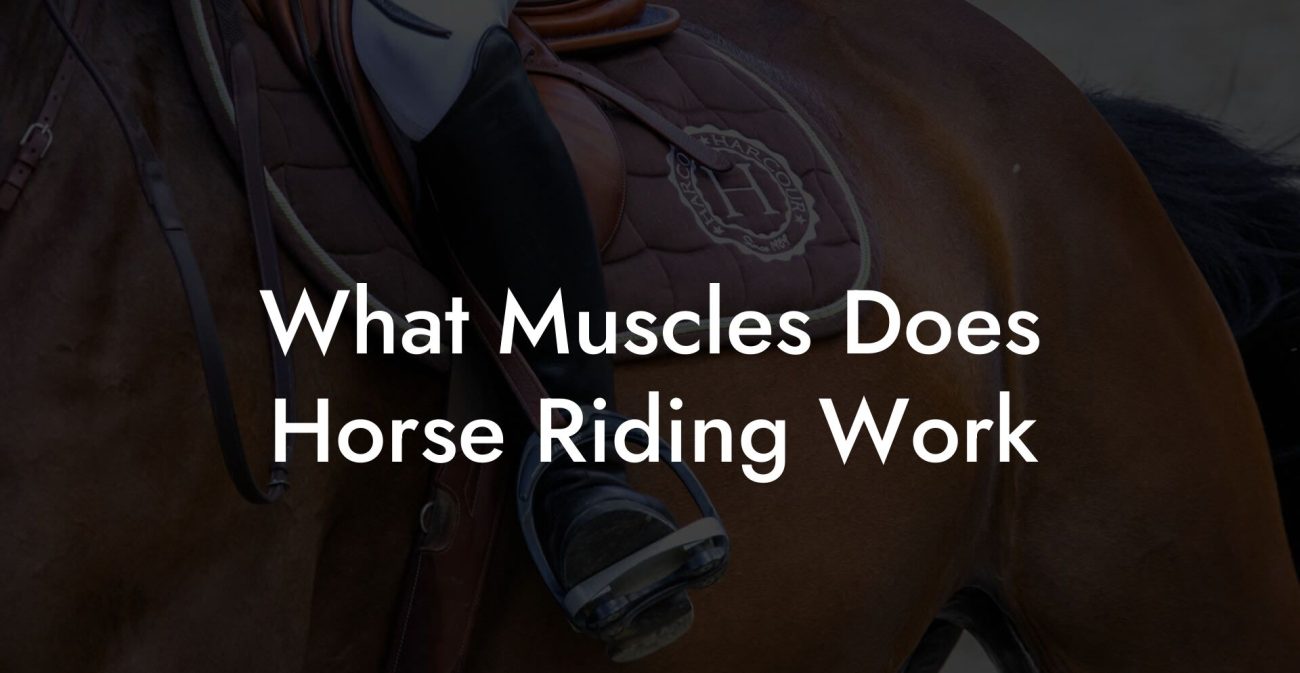Ever thought about how a horse’s diet could be as trendy and essential as your morning avocado toast? Harnessing the power of selenium isn’t just for tech geeks or skincare enthusiasts, our equine friends need this micronutrient too! In this deep dive, we’re breaking down everything you need to know about selenium for horses. From ideal amounts and nutrient balancing to real-life case studies that prove selenium is more than just a fancy element on your periodic table, this guide is here to equip you with the horsey know-how that’s both practical and surprisingly fun.
Quick Links to Useful Sections
- The Equine Element: Unmasking Selenium
- How Much Selenium Does a Horse Need?
- Digging Deeper: Factors Influencing Selenium Requirements
- Soil Selenium Levels
- Diet Composition
- Bioavailability and Form
- Health Status and Activity Level
- Recognizing the Red Flags: Selenium Deficiency vs. Toxicity
- Selenium Deficiency
- Selenium Toxicity
- Sourcing Selenium: From Pasture to Supplement
- Natural Forage
- Commercial Feeds
- Supplementation Options
- Balancing Act: Selenium and Other Essential Minerals
- Vitamin E: Selenium’s Best Friend
- Zinc and Copper
- Calcium and Phosphorus
- The Science Behind Selenium and Oxidative Stress
- Equine Case Files: Real-Life Selenium Success Stories
- Case Study 1: The Revival of a Veteran Showjumper
- Case Study 2: Foal’s Foray into Strong Muscles and Resilience
- Case Study 3: Overcoming Environmental Challenges
- Smart Strategies for Securing the Right Selenium Supplementation
- Work Closely with Equine Nutrition Experts
- Opt for High-Bioavailability Sources
- Create a Consistent Routine
- Regularly Review and Adjust
- Nutrition and Equine Health: More Than Just Selenium
- Resources and Community Support: Your Next Steps
- Long-Term Equine Wellness Through Balanced Selenium Management
- Equine Selenium FAQs: Your Burning Questions Answered
- Your Path to Equine Greatness: Embracing Selenium with Confidence
The Equine Element: Unmasking Selenium
Selenium is a trace mineral that plays a massive role in maintaining overall health for horses, much like your favorite protein shake powers your workouts. But what exactly is selenium? In the world of equine nutrition, selenium is vital for muscle function, immune support, and even reproductive efficiency. Without it, your horse might feel as out of sync as your Wi-Fi during a storm!
As quirky as it sounds, selenium works hand in hoof with vitamin E to protect cell membranes from oxidative stress. In simpler terms, these two nutrients join forces like your favorite duo in your go-to rom-com, keeping harmful free radicals at bay and ensuring that every gallop is powered by optimal health.
With soils varying in selenium levels around the globe, equine nutritionists have had to tailor supplementation strategies to ensure every horse gets exactly what they need. From selenium-deficient pastures to areas with potential toxicity issues, understanding the soil–plant–horse connection is crucial.
How Much Selenium Does a Horse Need?
Determining the ideal selenium intake for horses isn’t a one-size-fits-all situation. It hinges on several factors, including the horse’s weight, activity level, age, and even whether they’re pregnant or in work. Typically, horses require between 1 to 3 milligrams of selenium per day. For those who are high performers or in selenium-deficient areas, the recommended dosage might need a little tweaking.
Nutritionists often rely on the concept of “safe upper intake levels.” For horses, this upper threshold is around 8 milligrams per day. Exceeding this can potentially lead to selenium toxicity, a condition as unwelcome as your ex popping up on your social feed. Therefore, precision is key: too little might leave your horse lethargic, while too much can result in issues like hoof deformities, hair loss, or more severe health consequences.
Let’s break it down:
- Maintenance Needs: Typically, a sedentary horse might need closer to 1-2 mg per day.
- Performance Horses: Those under heavy work may need between 2-3 mg daily to help combat oxidative stress and muscle fatigue.
- Reproductive and Young Horses: Young growing horses and broodmares might need adjustments in their selenium intake to support developmental and reproductive health.
Getting the dosage right is like setting your phone to the perfect brightness, too dim, and you miss out on the details; too bright, and you risk eye strain. When it comes to horses, achieving that sweet nutritional spot ensures they can perform, recover, and thrive.
Digging Deeper: Factors Influencing Selenium Requirements
Several variables can affect how much selenium your horse actually needs, and understanding these can help you tailor an ideal nutrition plan:
Soil Selenium Levels
Believe it or not, selenium begins its journey in the dirt! Pastures in different geographic regions contain varying levels of selenium. For instance, some areas in the Western United States might have low selenium soils, necessitating enhanced supplementation in your horse’s feed. Conversely, regions with high selenium soils can lead to unintentional overconsumption.
Diet Composition
The primary diet of a horse, rich in forages and grains, impacts selenium absorption. Many commercial feeds now come pre-formulated with selenium and vitamin E, but if you’re feeding your horse a hay-only diet or supplementing with homegrown forage, it’s important to check the selenium content regularly.
Bioavailability and Form
Selenium comes in different forms, mainly inorganic (selenite, selenate) and organic (selenomethionine). Organic selenium is generally considered more bioavailable, meaning it’s easier for your horse to absorb and use, much like choosing a smartphone with a longer battery life for your busy lifestyle.
Health Status and Activity Level
Just like every human’s nutritional needs vary with activity level and metabolic rate, a racehorse and a retired pleasure horse have differing selenium requirements. If your horse is a high-energy athlete burning severe calories while performing, their need for antioxidants and repair nutrients increases.
Ultimately, working in tandem with a trusted equine nutritionist or veterinarian ensures that the selenium supply is calibrated precisely to your horse’s unique lifestyle.
Recognizing the Red Flags: Selenium Deficiency vs. Toxicity
Monitoring your horse's health for signs of nutrient imbalance is as crucial as watching your favorite influencer’s diet hacks. Let’s explore the twin dangers of selenium deficiency and toxicity so you can spot the warning signs early.
Selenium Deficiency
When a horse isn’t getting enough selenium, several issues might arise:
- White Muscle Disease (WMD): This is a serious concern in young foals, leading to muscle weakness and sometimes fatal outcomes if not addressed.
- Poor Immune Function: Selenium deficiency can impair your horse’s immune system, leaving them more vulnerable to infections.
- Reproductive Problems: Broodmares with low selenium levels might experience reduced fertility or complications during pregnancy.
In short, a deficiency can silently sap your horse’s vitality, making regular check-ups and nutritional evaluations essential.
Selenium Toxicity
On the flip side, too much selenium can be just as dangerous:
- Excessive Hair Loss and Hoof Abnormalities: Over-supplementation can cause dramatic coat loss and hoof issues that are both unsightly and unhealthy.
- Digestive upset: Gastrointestinal disturbances might occur, which no horse (or owner) wants to deal with.
- Incoordination and Lethargy: High selenium levels interfere with normal neuromuscular function, leading to clumsiness and general lethargy.
The key takeaway? Moderation is paramount. Regular feed analyses and balancing selenium with vitamin E can keep the scales tipped in favor of your horse’s optimum health.
Sourcing Selenium: From Pasture to Supplement
For those ready to geek out about equine micronutrients, the journey of selenium from the soil to your horse’s feed is both fascinating and essential for optimal care.
Natural Forage
In an ideal world, your horse would get all its selenium from natural grazing on selenium-rich pastures. However, as mentioned earlier, selenium levels in soil vary dramatically by location. If you’re in a low-selenium region, your horse might not get enough from pasture alone.
Commercial Feeds
Many modern equine feeds are formulated with measured amounts of selenium and vitamin E. These feeds ensure a consistent supply of nutrients, making your job as an owner a bit easier. Always check the nutritional label and consult a professional if you’re unsure about the balance.
Supplementation Options
When additional selenium is necessary, supplements come in several forms. Organic selenium supplements, often labeled as selenomethionine, are popular due to their higher bioavailability. These are typically mixed into the feed or provided as boluses.
It’s crucial to measure doses accurately, think of it like mixing your favorite smoothie: a little too much of one ingredient can throw off the entire blend. Working closely with a nutrition expert ensures that supplementation is both safe and effective.
Whether you rely on nature’s bounty or cutting-edge supplements, knowing your horse’s dietary starting point will help you fine-tune their mineral balance like a pro.
Balancing Act: Selenium and Other Essential Minerals
Selenium doesn’t work in isolation, it forms part of a vibrant cast of micronutrients that all play a key role in your horse’s overall health. Pairing selenium with the right nutrients is like assembling your dream team for a major championship.
Vitamin E: Selenium’s Best Friend
Often termed as the “antioxidant duo,” selenium and vitamin E collaborate closely. Vitamin E not only enhances the protective effects of selenium but also improves its absorption. Ensuring your horse’s diet contains sufficient vitamin E is key to reaping the full benefits of selenium supplementation.
Zinc and Copper
Minerals like zinc and copper also play supportive roles in muscle function and immune health. These minerals help maintain a balanced metabolic environment, ensuring that selenium can do its job effectively.
Calcium and Phosphorus
While primarily known for bone health, calcium and phosphorus work together to optimize metabolic processes. When a horse’s diet is balanced in these critical nutrients, the body can more efficiently utilize micronutrients like selenium.
In short, always view your horse’s diet as a full ecosystem. A careful balancing act, much like curating the perfect playlist, ensures every nutrient works synergistically to promote peak health.
The Science Behind Selenium and Oxidative Stress
Let’s get a little scientific for a moment (don’t worry, we’ll keep it light)! Selenium is a core component of several important enzymes, such as glutathione peroxidase. These enzymes act as antioxidants, neutralizing harmful free radicals that can damage cells and tissues during intense exercise or stressful conditions.
Think of glutathione peroxidase as a fleet of tiny firefighters in your horse’s body. They rush in to douse the flames of oxidative stress, preserving muscle integrity and enhancing recovery. This is crucial not only for performance horses but also for those that are simply aging gracefully in the pasture.
By supporting cellular health, selenium indirectly contributes to everything from endurance and muscle repair to overall longevity. So next time you see your horse galloping with wild abandon, know that a proper selenium balance might be one of the many reasons behind that extra spring in their step.
Equine Case Files: Real-Life Selenium Success Stories
Nothing speaks louder than real-world examples! Below are a few stories from the stable that highlight how dynamic selenium management can transform a horse’s well-being.
Case Study 1: The Revival of a Veteran Showjumper
Meet Bella, a seasoned showjumper whose performance had been slipping due to chronic low-grade muscle fatigue and immune issues. After running comprehensive blood tests, her veterinarian noted borderline selenium deficiency compounded by an inadequate vitamin E intake. Adjusting her diet with a balanced commercial feed and organic selenium supplements was like giving Bella a nutritional shot in the arm. Within a few weeks, her performance soared, her recovery times shortened, and she quickly regained her championship-worthy stride.
Case Study 2: Foal’s Foray into Strong Muscles and Resilience
Young in both years and spirit, Turbo the foal showed early signs of white muscle disease, a condition directly linked to selenium deficiency. Recognizing the urgency, his caretakers implemented a carefully measured selenium supplementation plan along with supportive vitamin E levels. The result? Turbo not only overcame the developmental hurdles but grew into a robust and energetic companion. His story is a brilliant reminder that early nutritional interventions truly set the stage for lifelong performance.
Case Study 3: Overcoming Environmental Challenges
In one region known for its selenium-poor soil, a local stud farm noticed an unexpected rise in minor health complications among their herd. Routine feed analysis revealed the low baseline selenium levels. By adapting their feeding regimen, integrating both natural forage testing and targeted supplementation, the farm managed not just a return to optimum health but saw improvements in overall coat quality and immune response across the stable.
These case studies illustrate that whether a horse is a sprightly foal or a veteran performer, maintaining an optimal selenium level is a game changer.
Smart Strategies for Securing the Right Selenium Supplementation
Just as you wouldn’t randomly download apps without reading reviews, wading into equine supplementation without a plan might lead to a nutritional fiasco. Let’s break down some smart strategies for finding and using the right selenium supplements.
Work Closely with Equine Nutrition Experts
The first step is a consultation with a trusted equine nutritionist or veterinarian. They can perform dietary analyses and blood work to assess your horse’s current selenium levels. This empowers you to craft a supplementation plan that’s tailored to your equine’s unique needs.
Opt for High-Bioavailability Sources
Look for supplements that offer organic selenium forms, such as selenomethionine. These formulations are generally absorbed more efficiently than their inorganic counterparts. Your horse deserves only the best, after all, just like you wouldn’t settle for a subpar latte!
Create a Consistent Routine
Consistency is the secret sauce to any successful supplementation strategy. Mix the recommended amount into your horse’s daily feed and monitor their health closely over time. Logging these changes can help identify trends and alert you to any potential imbalances before they become problematic.
Regularly Review and Adjust
Just as your favorite playlist might evolve with the seasons, a horse’s nutritional needs can shift as well. Make sure to schedule periodic nutritional reviews with your vet. This proactive approach ensures that your horse continues to receive the ideal selenium balance throughout its life cycle.
Nutrition and Equine Health: More Than Just Selenium
While selenium is a crucial piece of the dietary puzzle, it’s one element among many that collectively shepherd your horse toward peak health. A holistic approach to equine nutrition embraces a full spectrum of vitamins, minerals, and good old-fashioned pasture time.
Feeding your horse a balanced diet ensures not only optimal muscle function and immunity but also a shiny coat, robust hooves, and even a happier temperament. It’s the essence of taking care of your equine friend like you would a cherished pet, always tuning in to subtle signals and changing needs.
In today’s world, with the rise of natural supplements and organic feeds, being a modern horse owner means combining traditional wisdom with state-of-the-art nutritional science. Delving deep into the strategies behind mineral balance can transform routine care into an art form, echoing the balanced lifestyles we all strive for.
Resources and Community Support: Your Next Steps
Feeling inspired to become your horse’s dietary guru? Whether you’re a seasoned equine enthusiast or a newbie trying to figure out why your horse’s mane is extra extra shiny lately, there are countless resources available to help you master equine nutrition.
Join online forums and social media groups where fellow horse lovers share tips, success stories, and even warn each other about the latest feed fiascos. Many agricultural and veterinary colleges also offer workshops and seminars that dive into the science of micronutrients, including selenium. These communities not only provide expert guidance but also help you keep up with the latest trends and research in horse nutrition.
It’s also worth checking out industry publications and podcasts dedicated to equine health. These platforms are treasure troves of up-to-date information written by experts who share a genuine passion for nurturing healthy, happy horses. Trust us, your horse’s future self (and their verdant pastures) will thank you.
Finally, consider collaborating with your veterinarian to fine-tune your horse’s diet based on seasonal changes in pasture quality and environmental conditions. With proactive planning and community wisdom at your fingertips, you’ll have the tools to ensure your horse is always at the top of its nutritional game.
Long-Term Equine Wellness Through Balanced Selenium Management
The journey to optimal equine health is a marathon, not a sprint, and managing selenium is a key part of that lifelong commitment. By understanding the ideal amount of selenium, how it interacts with other essential nutrients, and how to recognize both deficiency and toxicity, you’re well-equipped to make informed decisions that empower your horse to thrive.
Whether your horse is prancing across a sunlit pasture or powering through a competitive course, a balanced selenium regimen supports muscle repair, fortifies immune function, and aids in long-term cellular health. This comprehensive care approach fuels not just physical performance but resilience, allowing horses to recover faster and maintain peak performance levels.
Remember, while selenium is tiny on the periodic table, its impact is enormous when it comes to your horse’s well-being. By partnering with equine nutrition experts, staying educated, and engaging with the vibrant community of horse enthusiasts, you foster a proactive environment for growth, balance, and lasting health.
Embrace the blend of modern science and timeless care practices, and watch as your horse gallops forward with renewed vitality. With each balanced meal and every carefully measured supplement, you’re not just feeding a horse, you’re nurturing a living, breathing partner that shares in your passion for health and adventure.
Equine Selenium FAQs: Your Burning Questions Answered
We know you might still have some questions about selenium and your horse’s nutrition. Check out these Frequently Asked Questions to get the lowdown on everything equine selenium.
1. What is the ideal daily selenium requirement for most horses?
Most horses require between 1 to 3 milligrams of selenium per day. However, horses in high-performance settings or those in selenium-deficient regions may need adjustments. Always consult your veterinarian for personalized guidelines.
2. Why is selenium important for horses?
Selenium plays a key role in muscle function, immune support, and antioxidant protection by working in conjunction with vitamin E to neutralize free radicals and support overall cellular health.
3. What are the signs of selenium deficiency in horses?
Signs of deficiency include poor muscle development, reduced immunity, white muscle disease in foals, and reproductive problems in broodmares.
4. Can too much selenium harm my horse?
Yes. Over-supplementation can lead to selenium toxicity, with symptoms such as hair loss, hoof abnormalities, gastrointestinal distress, and overall lethargy. Staying within recommended levels is critical.
5. How does selenium interact with vitamin E?
Selenium and vitamin E work synergistically; vitamin E helps optimize the antioxidant capabilities of selenium, enhancing muscle and cellular protection.
6. Are organic forms of selenium better than inorganic ones?
Studies suggest that organic selenium forms, like selenomethionine, are often better absorbed and utilized by horses compared to inorganic forms.
7. Where can I find reliable information about equine selenium needs?
Consult reputable equine nutrition journals, your veterinarian, and trusted equine health websites for the latest research and guidelines.
8. Can I adjust my horse’s selenium intake on my own?
It's best to work with a qualified equine nutritionist or veterinarian before making any changes, as individual needs can vary widely.
9. How often should my horse’s selenium levels be tested?
Regular testing, especially in regions known for low or high soil selenium, is advisable. Your veterinarian can suggest a testing schedule tailored to your horse’s conditions.
10. What should I do if I suspect a selenium imbalance?
Contact your veterinarian immediately to conduct proper tests and develop an appropriate nutritional plan.
Your Path to Equine Greatness: Embracing Selenium with Confidence
There you have it, an in-depth exploration of how much selenium a horse needs and why this seemingly minuscule mineral wields colossal influence over your equine’s overall health. Embracing proper selenium management is about more than just balancing numbers; it’s about understanding the intricate interplay between diet, environment, and the dynamic wellness of your horse.
With the right amount of selenium and a holistic approach to nutrition, your horse can reach new heights in performance, recovery, and vitality. Whether you’re a competitive rider, a dedicated stable manager, or simply a horse enthusiast keen on providing the best care, the insights you’ve gained here are tools to help your equine thrive.
Remember, knowledge is the first step toward cultivating a nurturing environment. Stay informed, partner with experts, and join the community of horse lovers who believe in a balanced diet as the cornerstone of equine wellness. Your dedication to understanding and applying these principles will set your horse on a lifelong journey of health and high-spirited adventures.
So, next time you’re planning meal times and supplements for your majestic friend, think of selenium as that secret ingredient, a subtle yet transformative boost that makes every gallop, jump, and playful toss of the mane all the more extraordinary.













